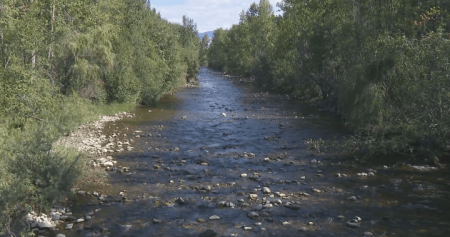The proposed rezoning bylaw in Calgary is considered a step towards lowering carbon emissions and increasing physical activity in the city. Currently, residential areas are zoned for single-family homes by default, but the proposed bylaw would allow for greater density by permitting duplexes, triplexes, and rowhouses to be built. Some concerns have been raised about increased density leading to higher carbon emissions, but city administration argues that the new bylaw will support climate action by reducing the distance between trips and creating opportunities for alternative modes of transportation.
The proposed bylaw is supported by James Stauch, the executive director of Mount Royal University’s Institute for Community Prosperity. He believes that increasing density in neighborhoods can lead to lowered carbon emissions and a reduction in car dependency. Studies have shown that population-dense cities emit less greenhouse gas emissions per person, while suburban areas contribute significantly to household emissions. By increasing density and promoting alternative transportation options, Calgary can work towards a more sustainable future.
The rezoning to RC-G by default is seen as a positive move to preserve natural grassland and agricultural land on the outskirts of the city while allowing for more people to live in efficient homes. This would align with the Municipal Development Plan’s goal of creating more compact and efficient land use to foster vibrant communities and provide more mobility choices. The proposed bylaw also aims to share the infrastructure load more evenly across the city, ensuring that all neighborhoods contribute to densification efforts.
Robert Tremblay, co-chair of the Calgary Climate Hub’s board of directors, supports the rezoning as a positive step for the climate. He believes that increased density will make Calgary more energy-efficient and encourage alternative forms of transportation, such as walking, biking, and public transit. Studies have suggested that community designs that promote physical activity can help combat chronic diseases and improve overall health outcomes. Additionally, improving public transportation infrastructure can lead to fewer accidents, reduced air pollution, and increased physical activity levels.
While concerns have been raised about the impact of densification on parks and green spaces, researchers argue that the bigger issue is urban sprawl. Developing more houses at the edge of the city consumes valuable green space and natural habitats, leading to significant environmental impacts. It is important to strike a balance between preserving tree canopies and increasing density, as tree coverage can thrive in both low-density and medium-density neighborhoods. By focusing on sustainable growth strategies and promoting active transportation options, Calgary can work towards a more environmentally friendly and livable city.
Overall, the proposed rezoning bylaw in Calgary is seen as a positive step towards lowering carbon emissions, increasing physical activity, and promoting sustainable urban development. By allowing for greater density, supporting alternative transportation options, and preserving natural habitats, the city can work towards a more efficient and eco-friendly future. While concerns about the impact on parks and green spaces have been raised, researchers emphasize the importance of addressing urban sprawl and focusing on long-term sustainability to ensure a healthy and vibrant city for future generations.













